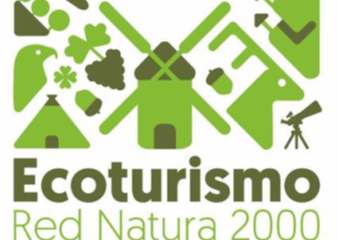Creation of a hiking trail by young people from the Institut Thérapeutique Moyembrie
France
Introduction
The DITEP (Institut Thérapeutique Éducatif et Pédagogique) cares for young people aged 4 to 18 with behavioural and conduct disorders that seriously disrupt socialisation and access to learning. Demonstrating a keen interest in activities based on the forest ecosystem, the young people at the DITEP Moyembrie have invested in the creation of a labelled hiking trail in the heart of the Saint-Gobain massif, where the Prémontré order was founded and a royal ice-cream factory was set up under Louis XIV. The young people helped to mark out and create the various signs and interactive terminals along the way.
Presentation of the project
The core job of the supervisors is to devise and implement the various mediation techniques required as part of the support project for each child. Young people from the DITEP regularly take part in walks or mountain bike rides in the forest. A discovery class has also been organised to work specifically on the forest environment (recognising tree species, identifying mammal footprints, observing birds/animals to understand the forest food web). The DITEP Moyembrie supervisors were themselves passionate about the Saint-Gobain forest, which is managed by the ONF, and noticed that there was no forestry walking trail starting from the town of the same name. They saw this as an opportunity to help the young people from the DITEP to get involved in a wide-ranging project and to give something back to others, even though they find it difficult to do things for others. The project involved the development of 3 signposted walking trails, with interpretation panels designed by the young people and enhanced by a professional graphic designer. Overcoming their reading and writing difficulties, the young people from the DITEP created botanical terminals, interactive puzzles, quizzes on edible mushrooms, trees, forest animals and birds, as well as information desks highlighting little-known heritage features such as a blockhouse, the Sébourgan quarries, le saut du boiteux and the mysterious standing stones that give their name to the trail. In addition to the funding, without which the project would not have been possible, the LEADER programme provided support for the supervisors, who were discovering both the development of a tourism project and the administrative and financial set-up of a project of this scale. The LAG contributed to the development of partnerships, networking and the promotion of the project. While they have noted an increase in the number of visitors to this little corner of the forest, which now welcomes more groups of walkers as well as a large number of schoolchildren, the DITEP supervisors are above all measuring the impact of the project on the young people who have taken ownership of the trail and become fully involved. In fact, the trail continues to be a key support for educational activities, with the creation of workshops run by the young people themselves to help them develop oral language and self-control, as well as pre-professional workshops to help them maintain the trail.
The emblematic character of the project
The Pays Picard – Vallées de l’Oise et de l’Ailette is an area with a rich historical and natural heritage, which nevertheless needs to be developed and put on the move, which is at the heart of the Local Action Group’s development strategy. While this strategy offers the possibility of creating walking routes in an area of the Axis region that capitalises on outdoor activities, its main ambition is to develop mediation tools, both physical and digital, to bring the heritage to life. The project is innovative in that it is run by a therapeutic institute. The panels are created by children and teenagers with disabilities. The creation of this trail provides an opportunity to work on the young people’s project by giving them the chance to get involved on behalf of others, which represents a challenge for these young people, whose disorders interfere with their day-to-day social relationships. In addition, the visuals on the panels are aimed at both young children (height of writing, presence of pictograms, interactive furniture) and adults, whether readers or not, thus helping to promote equal opportunities, particularly in terms of access to culture and awareness of the importance of respecting and protecting the environment.
Pictures

Institut Thérapeutique Éducatif et Pédagogique (ITEP) Moyembrie
GAL Pays Picard – Vallées de l’Oise et de l’Ailette
Hauts-de-France

